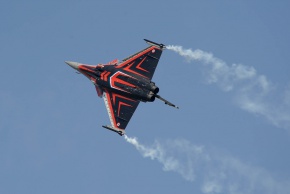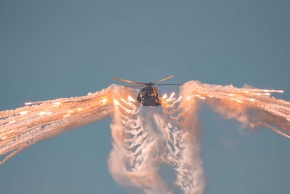News
Capture the people you’re with // Humans of NATO Days
There are people who have been to more NATO Days editions than most of the participants or even most members of the organizing team. Those people have become an inseparable part of the event. They are first to come in the morning and among the last to leave in the evening. You can see them on the rooftop of the staff building, you can meet them in the crowd. But you never see them on video - because they are the ones operating the cameras and capturing the atmosphere. In this part of the Humans of NATO Days series, we talked to Iain Campbell of the PlanesTV company. He and his colleagues provide the video footage for the live stream of the event or for the clips they produce.
Just a few hours after the interview was made, PlanesTV have been awarded the prestigious Jock Maitland Sword of Excellence at the European Airshow Council Convention in Prague. The award recognizes outstanding contributions to the airshow community over many years.
How many airshows per year do you visit and film?
Generally about 12. Around two-thirds of them are in the UK. We are lucky to have a strong tradition of airshows in the United Kingdom, which is really where the business was built. The remaining third of the events we cover are overseas.
How many of them are in Europe?
We cover two or three shows in Europe each year. Some time ago, we also did a season or two in the US. The business has been running for 35 years, so over that time, we have covered a variety of shows. We have filmed in Australia, maybe once, and in America a long time ago. We have also covered one or two events in the Middle East. This is an area of expansion for us because, unfortunately, the number of military and airfield-based shows in the UK has decreased over the years. We are currently focusing more on international events.
How do NATO Days in Ostrava differ from “regular airshow”, especially from your perspective? Given airshow is just one part of the event.
I could go on about how your event is different from others, but for us, all airshows are long and exhausting days. We are usually among the first people on-site and the last to leave. It might sound strange, but we need to be there early to set up. A display might last ten minutes, but we spend hours preparing before and after. For us, an airshow day typically lasts 8 to 10 hours. NATO Days are particularly demanding because they start early and finish late. But we love the work, and I wouldn’t change it. It’s a long day for everyone involved.
What does your day look like when you are at the airshow - and when you are not?
Typically, we have a team of two or three people. During the show, our tasks vary. One person is always operating a camera, and another is handling footage on a laptop. Personally, I often work with the camera positioned on the roof, which gives me a great view—though it means dealing with all kinds of weather conditions. Weather is always a challenge, and we just have to adapt to whatever conditions we face.
When we are not at an airshow, we are usually either sleeping, eating, or traveling to the next event. There is sometimes a little time for socializing, but mostly, if we are not at the show, we are resting or preparing for the next one. The days are so long that if we’re lucky, we get an evening meal.
|
|
What kind of preparation goes into your live stream?
That’s an interesting one for NATO Days. Generally speaking, our international live streams vary in scope. At NATO Days, we provide one camera as part of the live production. In other cases, we provide two or three cameras and have full creative control. Preparing for a live stream involves logistical planning to ensure we have the right people, equipment, and locations ready. By September, when NATO Days happens, we have already done multiple practice displays earlier in the season. In reality, our preparation is based on 35 years of experience and corporate knowledge of PlanesTV, so by showtime, we mostly focus on execution – ensuring cameras, people, and equipment are all in the right place at the right time.
That’s the preparation, but what happens after the show? It’s not just about turning off the cameras, right?
Exactly! That’s when the real work starts. After the show, we sort through all the footage - our own and material provided by display teams and participants - to create a highlights package. Traditionally, we produced longer programs of 60 to 90 minutes, which took weeks to edit. Nowadays, our highlights packages are quicker to produce. While I sometimes miss the detailed post-production work, it’s still long hours of editing, selecting the best moments, adding music, and making sure everything comes together to showcase the event properly. However, I enjoy it, I really do. But it is hard work.
What makes filming at NATO Days challenging?
One challenge is ensuring we capture great footage of all participants – we are trying to make sure to capture everyone’s best sides. To do so, we use two types of cameras: long-lens cameras for distant shots of flying and ground displays, and people roaming around with cameras for close-ups and atmospheric and intimate shots. Sun positioning is also tricky. If a subject is backlit, the image doesn’t look great, so I always try to position my camera to avoid that. Spotters often have similar complaints, but unfortunately, the airport layout determines our options.
Do you remember the first time you attended NATO Days? How many times have you been there since?
I believe our first time was in 2012, so about 13 years ago. We have only missed it when it was cancelled or when we couldn’t attend due to the pandemic. In total, we have covered around 10 editions. It’s been great to see the event evolve while maintaining its core structure and atmosphere.
Ten editions, it’s more than most organizers or participants. But do you ever have time to actually enjoy the show?
Not in the traditional sense, but we make an effort to capture the atmosphere. Our team members are multi-skilled, so we can take turns covering different aspects of the event. I try to spend some time each year capturing the early morning static displays, as it’s a special time of day with a unique atmosphere.
How did you become a specialist airshow video producer?
My father started this business in 1989. I grew up attending airshows, watching him film them. I briefly pursued other things, including university, but I was drawn back to this work. It’s a niche industry, but I love the subject matter, the people, and the relationships we’ve built over 35 years.
How is filming airshows different from filming other events, like music festivals?
The biggest difference is that aircraft move in three dimensions. At a music festival, you might track a performer on stage, but your movements are minor. With airshows, I often have to twist and reposition quickly to track fast-moving aircraft. It’s physically demanding, and I always have to plan my stance to stay steady throughout the shot.
What advice would you give to visitors filming with just a phone?
Capture the people you’re with! While it’s great to film the displays, the best memories often come from recording your friends and family enjoying the event. Therefore, it is much better to capture your loved ones and how they enjoy the show. Those are the real memories.
What’s the most memorable footage you’ve ever captured?
One standout moment was filming the Saudi Hawks in an air-to-air shoot. I was strapped into the back of a transport aircraft, trying to stabilize the camera while turbulence made it extremely difficult. Despite the challenges, we managed to get some amazing footage.
We can confirm that you always manage to get amazing air-to-air footage and what's most incredible, it’s how stable it is. How is that possible?
It’s partly about the right equipment and experience. I was really excited when I was asked to do it, and the result was excellent.
Still the air-to-air filming brings a completely different set of challenges. What do you need to have in mind during this shooting?
I’ve been fortunate that for many of these shoots, the most challenging aspects—like logistics and coordination—were handled by others. Organizing such a complex operation requires strong relationships and convincing people that it’s safe and sensible. Those would normally be the most challenging aspects. Technically, shooting handheld from the rear ramp of a transport aircraft is incredibly difficult. I’ve done it for NATO Days, and it’s easy to do it wrong, make mistakes or get overwhelmed. It’s noisy, bumpy, and stressful because you know a lot of people and resources are dedicated to getting you the perfect shot. You don’t want to mess it up.
Air sickness is also an issue – I've seen photographers struggle, and I remember a Saudi flight where some crew members were extremely uncomfortable. But over time, I’ve developed the ability to stay calm under these conditions and have captured some great shots.
Do you have a dream airshow or aircraft you’d love to film? Maybe a display team or an aircraft you’ve never seen before but would love to? Or an airshow?
I’d love to cover more Asian teams, such as those from India or China. Also, I’ve had limited opportunities to film the F-22, and I’d love to improve on previous attempts. With better equipment, there’s always a chance to do an even better job. Oshkosh is another event I’d love to experience, though more as a visitor than a videographer.
And on the other hand, is there a flying display you can watch over and over and you never get bored of it?
Be careful what you wish for, I suppose. There are flying displays you can watch over and over without ever getting bored. Each show, each weather condition, and each backdrop present new challenges, making every display unique. If I had to pick one display I could watch repeatedly, I’d probably say a large formation aerobatic team. With repetition, you get better results - just like in training. The routine is structured and repetitive, but each time, you improve your coverage.
And if I had to choose one, I’d say the Red Arrows, partly because I’m a proud Brit. However, my favourite jet team is actually Frecce Tricolori. They always put on a fantastic show, and I rarely get the chance to see them. Hopefully, we’ll see them this season.
Do you have a favourite airshow to film at?
It changes year to year, but my favourite is usually the one where I can bring the biggest team. It’s not that the job gets easier, but having skilled team members reduces my personal stress and lets us do the best possible job. For example, some events allow us to bring in a large crew, including commentators, camera operators, and support staff. That makes everything more enjoyable and allows us to deliver the highest quality coverage.
On occasion, we have brought big teams to do English streams for NATO Days, and those have been wonderful. To have control over the commentator, and cameras, and just do the best job makes things much more enjoyable for me. Of course, RIAT in the UK is a major event for us. We’re there for a week, and it’s always a pleasure to work with the organizers.
What’s the biggest team you’ve ever worked with?
At our peak, we had around a dozen people, especially when we were producing DVDs. If you include trade staff, it was closer to 18. We had people handling sales, managing onboard cameras, capturing crew footage, and running live broadcasts.
We don’t do trade stalls anymore, and honestly, I don’t miss them – It was just another logistical challenge. But having a strong media team ensures we get the best coverage possible.
And what’s your usual team size?
Typically, a minimum of two or three people, especially for live broadcasts. It’s a small but efficient team, though it limits flexibility since everyone has to stay within close range. Despite that, I’m proud of what we achieve with a compact crew.
Are aircraft the love of your life or what makes you truly happy?
Well, just in case my wife reads this, I have to say my family! I have a wonderful wife and two amazing children.
But yes, I also have a deep passion for aviation and airshows. It would be a sad day if I had to do something that didn’t involve them. Family comes first, of course – people before planes, my wife says.
Finally, is there anything you’d like visitors to NATO Days to know about you or your work?
I just want to say how proud we are of our relationship with the event. Every year, I look forward to visiting your wonderful part of the world.
NATO Days are truly unique – it offers incredible ground displays, long flying displays, and is free to the public. It’s an extraordinary event, and we’re honoured to be part of it.
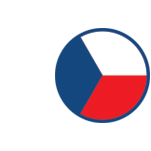

















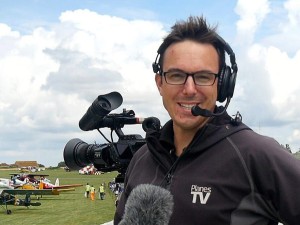
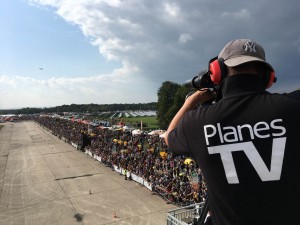

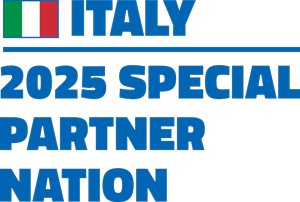
















.jpg)
.jpg)
